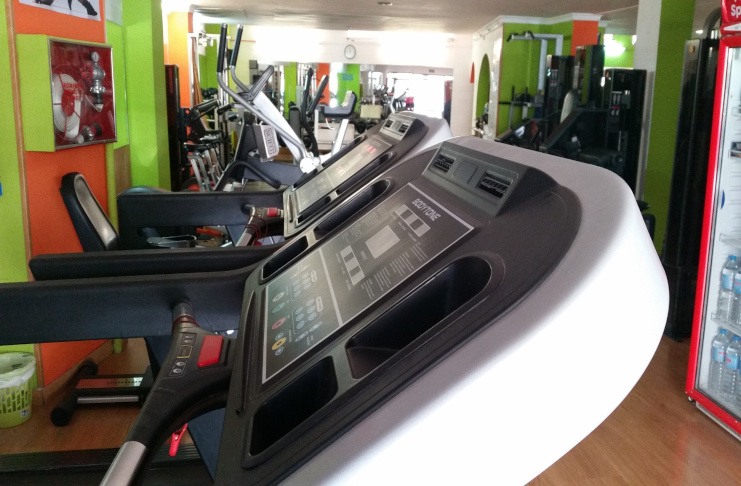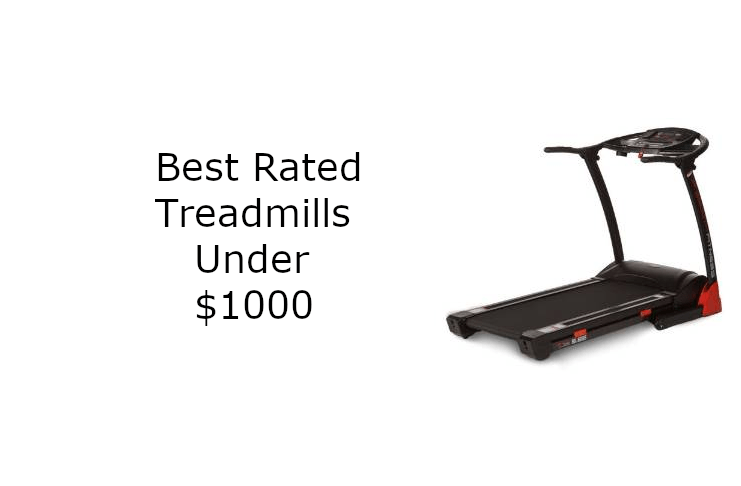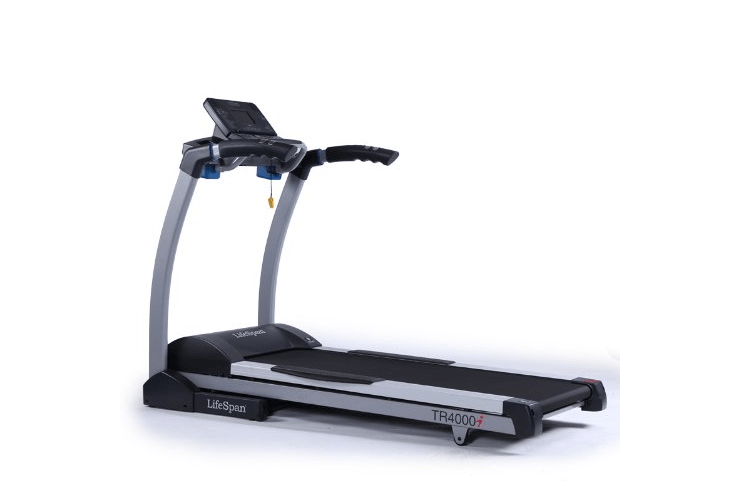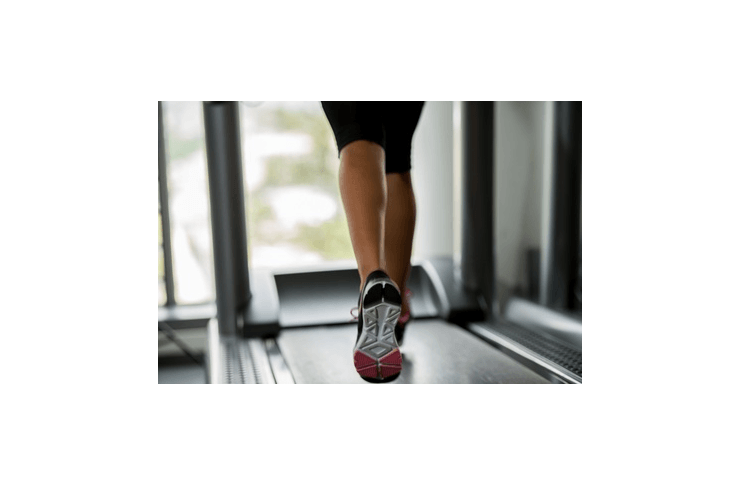The wide variety of treadmills makes it hard for first-time buyers to know where to start. But get one thing straight: the best treadmill buyer is an educated one. Here’s how to make a smart decision when purchasing a treadmill, which (fingers crossed) will last you for many workouts to come.
Why Are There So Many Treadmills to Choose From?
Did you know that treadmills are the biggest category of fitness equipment? In fact, if most fitness stores couldn’t sell treadmills any more, they’d have to close their doors. Treadmills are the most popular form of exercise equipment, and for good reason: they allow the user to pursue a fun, natural, effective workout routine that’s personalized and variable.
Everyone Loves Treadmills
Treadmill users of all ages, abilities and types find workouts that suit them perfectly for years of healthy, beneficial exercise. They’re used by professional athletes, people in rehabilitation from injuries, and everyone in between. Using a treadmill is as natural as walking, and they are very effective at helping people reach their fitness goals. Doctors recommend walking for health at any age- it’s good on the joints, it raises your metabolism and it’s wonderfully fun and easy to do.
Lots of Diverse Buyers Means Lots of Choices
It’s for all those reasons that the treadmill buyer is faced with so many choices. Don’t worry: this treadmill guide will show you how to quickly narrow down the field and find the perfect one for you. This is why you definitely don’t want to rush into your purchase. There’s a lot to consider…after all, you’re about to spend a fair amount of money on a fairly large piece of equipment!
It’s a Big Purchase So Don’t Rush It
Here’s why you can’t rush your purchase. You should follow these 7 simple steps to ensure a wise investment- only by following these steps will you make a sensible choice for you and your family’s health for the future. Buy becoming a smart buyer, you’re increasing the chances that you’ll find a treadmill that makes you stick to your workout goals. Treadmills already have the lowest drop-off rate of all types of fitness equipment but many people still buy the wrong one and rarely (if ever) use it after the first month.
Use This Treadmill Buying Guide to Narrow Your Choices
Don’t let that happen to you- use this treadmill buying guide to find the perfect model and you’ll be happy for years to come, not to mention healthier as well. So if you’re ready to begin, let’s go! Here’s the handy 7-step guide to buying treadmills promised earlier. We’ll explain each step in detail afterwards
- Know yourself and your goals.
- Learn about treadmills.
- Set your budget.
- Buy from a trusted store or website.
- Ask questions.
- Test the treadmills you’re considering.
- Think before purchasing.
1. Know Yourself and Your Goals
How your treadmill will be used is the single most important factor when deciding which one to buy. It determines the quality you need and the “extras” you should pay for. By firmly establishing your goals and clearly defining how the treadmill will be used and by whom, you’ve already narrowed your choices right there. Ask yourself these questions…
- Will you use the treadmill to run or walk?
- How many people will be using it?
- How often will each person be using the treadmill?
- Will anyone using the treadmill weigh over 200 pounds?
- How long will your workouts be? Other users?
Walking vs. Running. The quality you need is determined by the answers to these questions. If you are only going to walk on your treadmill and never run then you won’t need the top quality machine. Your motor won’t have to be as strong (more on that later), and neither will the belt or deck, all of which make up the drive system.
Weight. However, if anyone using the treadmill weighs over 200 pounds, you’ll have to upgrade to a better quality treadmill, even if that person will only be walking. Weight makes a huge impact on the wear and tear of your treadmill, no pun intended.
Frequency of use. How often the treadmill gets used is also a huge determining factor in how much quality you need in your treadmill. Normal use is about an hour a day. That can be two people using the treadmill for 30 minutes each, or just you taking long walks. Anything more than an hour a day means you’ll have to upgrade to a higher quality (and higher price, in most cases).
So, based on these indicators of how much wear and tear you’ll be doling out to your treadmill, you are now armed and ready to begin learning about what’s out there. You’ll now be able to quickly rule out some categories of treadmills, based on just a little bit of homework.
2. Learn About Treadmills
Step Two is actually the hardest because there are so many options. There are two main categories of treadmills: folding and non-folding. We’ll start there…
Folding vs. Non-Folding Treadmills
A treadmill takes up about as much room as a small sofa. No matter how large or small your home, you’re going to need room for the treadmill plus a few feet on either side for easy access. Folding treadmills will fold up into about half the normal size for storage. You’ll still need a large spot for the folded up treadmill and keep in mind it’s not very pretty when folded up. In fact, it’s pretty imposing- the deck is raised up to create a solid “wall” of rubber and plastic in your room.
However, many treadmill users have no other choice because of size limitations. Folding treadmills are cheaper, smaller and more easily compatible with apartment living.
One thing to consider is that since a folding treadmill must have a hinge it may feel less stable when in use. Usually people who have the space and can afford it will opt for a non-folding treadmill.
Range of Quality
There is a very wide range of treadmill quality but it’s not a clear choice which level you’ll need until you ask yourself some questions about your fitness goals and how the treadmill will be used. That’s why step one was to determine these factors.
With very few exceptions, you can usually tell quality by the price of the treadmill. The price categories are as follows:
- $400 to $700- if you use the treadmill just 30 minutes a day and weigh less than 200 pounds, this should suffice
- $700 to $1200 range- for when there’s someone over 200 pounds, and the treadmill gets used more than an hour a day
- $1200 to $3000 range- for runners, multiple family users, and heavy use, more than an hour a day
A mistake made by people more often than any other mistake is to under-purchase their treadmill.
Don’t under-purchase when it comes to treadmills- you won’t save money in the end.
For whatever reason, usually budgetary, people buy less treadmill than they need. When you don’t buy the quality required for your particular use profile, you’ll end up wearing out parts faster, shortening the life of your treadmill. In this case, you would have saved money by purchasing a better quality, albeit more expensive treadmill in the first place.
Quality and Noise
Generally, the higher the quality treadmill, the quieter it will be. A motor that makes lots of noise is either straining too hard, or the engineering/components aren’t good quality. A good strong motor won’t have to strain too hard to do its job and will be quieter. On the other hand, a good motor is wasted if the components around it are cheap. How to tell? Try the treadmill when the time comes. More later on how to tell a good treadmill.
Many people make the mistake of equating horsepower with quality. True, you do need a powerful-enough motor to handle the use you’ll give it. However, horsepower ratings are not standardized between brands so there’s really no telling how powerful one is until you test it. You’ll see “CHP” measurements: that stands for continuous horse power.
You do want a motor that runs continuously throughout your workout. There are cheaper models that slow down when you do, but it’s hard to keep them going. Go for CHP.
You don’t want a belt that’s too heavy, either. That will cause the motor to have to work harder than it should. That will cause the motor to run hotter than normal, so it will not last as long. One of the advantages of the cheaper fold-up models is that their walking belts are shorter…meaning it takes less power to keep them going. If you don’t need an extra long belt, don’t buy one. They are for tall people and runners with long strides.
Shock Absorption. The huge advantage of a treadmill over pavement is that its shock absorption is much gentler on you joints. You want the deck to be firm and stable but also forgiving on your knees. On the other hand, you don’t want it to be mushy, either.
The frame should be solid. Nothing is worse than a frame that can’t handle its job! Frames are either steel or aluminum, usually. Steel tends to be a little springier than aluminum and usually makes a quieter treadmill. Aluminum is strong but less forgiving …it’s rigid, which for runners isn’t a good thing. Welded steel is the best.
The belt seam should be at a diagonal. This means it’s a stronger belt than ones with a horizontal cut, and smoother as well. The weave of the belt is also important. The smaller the stitches the better. The underside of the belt should be made of a polyester-nylon blend. The upper portion should be a black polyurethane. Cheap belts will have only nylon in the under layer.
The Console: Electronics, Programs, Buttons
The console of your new treadmill can determine the price you pay, so it’s important not to pay for features you won’t use. Here are some the basic, standard features you’ll find on treadmill consoles across the board. They’re considered necessary, and you’ll find you need them, no matter what type of workout you will be doing:
- speed buttons: up and down
- incline buttons: up and down
- distance meter
- time clock
Now here are some of the optional, more fancy and complex features on treadmill consoles, which you may end up paying more for:
Heart Rate Monitor. This can be a chest strap that you wear. It connects to the treadmill and measures your heart rate. If you are targeting a certain heart rate for fat burning or cardio workout, this can be useful. The other type of heart rate monitor works through the handles on the machine. You grip the handles and it measures your heart rate. The chest strap model is usually found on more expensive treadmills. Beware, however, many people find the chest strap to be uncomfortable or annoying while working out.
The heart rate monitor can work in conjunction with the treadmill so that the speed and incline of your workout are automatically altered to keep you within a certain range of heart rate.
Will you use pre-programmed walking/running courses? These are programs which will change the speed and incline of the treadmill while you’re using it, to simulate a varied course. For some people, this is important because it keeps them motivated. If you don’t know the answer, then join a gym for just one month and use the treadmills’ programmed courses and see how you feel.
Multiple user IDs. If more than one person will be using the treadmill, some people find it nice to have multiple user IDs. This allows you to “log in” and see your own personal history data of past workouts.
Quick Stat Button: If you want to just start walking/running without fancy options, a quick start button is very handy.
Some like a fitness test, which motivates them when they see progress over time.
Intervals are a popular way to work out, and can be a feature that’s part of the programmed options on your treadmill.
More recently, we’re starting to see treadmills coming onto the scene which have all sorts of connectivity. By this we mean things like:
wifi capability
a slot for your tablet
ability to connect to iFit
television screen built in
Before you pay for these, be sure they’re things you really need. Remember, the more complex your console, the more can go wrong with it. If you do go these options then pay more attention to your warranty. More on that later.
3. Set Your Budget
Know how much you can spend before you let treadmill salespeople work on you! Needless to say, it’s easy to let yourself be convinced you should spend more than you can afford once you start to fall in love with a super duper treadmill with features you may or may not need. If this happens, go home and repeat step two, above.
4. Buy From a Trusted Store or Website
Speaking of salespeople, in the treadmill business they are going to be more helpful than anything, as a matter of fact. For one, they’ll answer your questions…which you should have! Don’t have any questions? Again, go back to step 2 and repeat. Write your questions out on a piece of paper if that helps. Take it with you when you go shopping for a treadmill to keep you on track.
A trusted store will not only answer your questions, they’ll be more helpful with warranty issues, repairs, and initial delivery. They’re more likely to have an on-site repairman who can service your treadmill when the time comes. A trusted store is most likely to be a smaller store, privately owned, and a specialty fitness store.
The big box stores may be cheaper but pay attention to the level of service, both before and after your purchase. With a complicated machine like a treadmill, you want to ensure good service even after you get it home. Big box and online stores do not excel in this department.
The warranty is important, too.
Most treadmill brands come with a lifetime warranty on the frame. That’s nice, but the things that are most likely to break down and need service are the electronics and the motor. Get a minimum of 1 year labor warranty and 1-3 years on parts. The more expensive treadmills will have better warranty packages.
Extended warranties from the store are usually not worth it. This is true across the board in retail.
A survey of treadmill buyers who bought their treadmills online reveals that delivery and returns are often the downside to purchasing online. Buying from a specialty fitness equipment store will ensure a much better experience in this department.
5.Ask Questions
Remember step two, where you learned all about the different types of treadmills and all the options they have? Here’s your chance to put all that to work for you: draw up your list of questions and go to a retail store and start asking. You’ll solidify what you learned, and start to really understand the market.
6. Test the Treadmills You’re Considering
By now you’ve narrowed the field a bit…you’ve decided whether a folding or non-folding treadmill is for you. You have an idea of the level of quality you need, based on use it will receive. You know what features you like. You’ve shortened your list based on your research so now it’s time to try some out. Exciting, right?
Find a store or gym that has the treadmills you’re considering. At the very least, find a place that has the same brand and try those out. Here’s what to look for:
is it smooth? if you feel a thump thump then the belt is cheap, perhaps cut on the horizontal instead of the diagonal. Also, cheap engineering can mean parts don’t jibe well together, resulting in a bumpy ride.
does it feel wobbly or stable? When you run or walk, the frame shouldn’t feel as if it were going to fly apart, crack or shatter underneath you. You want a solid, stable feel when testing.
is it noisy? the quieter the better…for your convenience but also, like we mentioned earlier, because it’s an indication of quality.
how does the impact feel? good treadmills have a “floating deck” which cushions the impact. Look for a deck that has solid wood, not pressboard.
can you understand the console? Of course it’ll take you a little bit of time to get used to all the buttons and features, but the console should be intuitive and easy to use right off the bat. The start button, speed buttons, incline buttons and emergency stop buttons should all be easy to find and large enough to hit quickly and easily while working out.
is it big enough? If you’re going to run, then bring workout clothing and sneakers to the store and actually run. If your stride is long, make sure your chosen treadmill has a deck that’s long enough. 60″ is usually plenty for most people, runners included.
7. Think Before Purchasing
Lastly, it’s probably better to refrain from purchasing your treadmill the very first day you go to a store. Once you find one that seems right, go home and think some more. At least let your brain sleep on it! It’s a big purchase and it’s also your health. Getting the wrong treadmill can mean you won’t want to use it. How would that be, spending all that money on something you won’t use? Go home, weigh your options again, and who knows you may even come up with some further questions for the sales people. That’s OK, because that’s what they’re there for. They’re more than happy to answer.
Doing the proper research and knowing what you need in a treadmill mean you’re well on your way to making the right decision. By following our handy seven-step treadmill buying guide, you’re sure to choosing the best one that’s just right for you…and you know what that means: a healthier, happier you for years to come!




